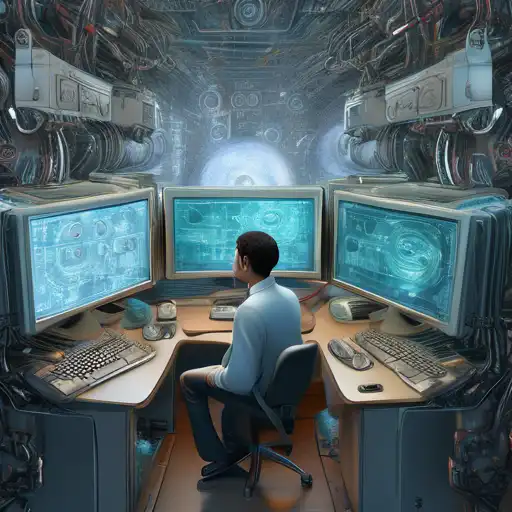Introduction to Computer Vision
Computer vision is a field of artificial intelligence that trains computers to interpret and understand the visual world. By leveraging digital images from cameras and videos and deep learning models, machines can accurately identify and classify objects — and then react to what they 'see'.
How Computer Vision Works
At its core, computer vision involves the automatic extraction, analysis, and understanding of useful information from a single image or a sequence of images. It involves the development of a theoretical and algorithmic basis to achieve automatic visual understanding.
- Image Acquisition: This is the first step where the system captures an image or a video.
- Pre-processing: The image is then processed to improve its quality for further analysis.
- Feature Extraction: Key features are extracted from the image to help in understanding it.
- Detection/Segmentation: The system then detects or segments parts of the image to focus on specific areas.
- High-level Processing: Finally, the system interprets the image based on the extracted features and segments.
Applications of Computer Vision
Computer vision has a wide range of applications across various industries. Here are some of the most notable ones:
- Healthcare: From detecting tumors in MRI scans to monitoring patient movements, computer vision is revolutionizing healthcare.
- Automotive: Self-driving cars use computer vision to understand their surroundings and make driving decisions.
- Retail: Automated checkout systems and inventory management are powered by computer vision.
- Security: Facial recognition systems and surveillance cameras use computer vision to enhance security measures.
Challenges in Computer Vision
Despite its advancements, computer vision faces several challenges. These include the need for large amounts of training data, the complexity of understanding context, and the difficulty in processing images in real-time under varying conditions.
The Future of Computer Vision
The future of computer vision is incredibly promising. With advancements in artificial intelligence and machine learning, we can expect more sophisticated and accurate visual recognition systems. These systems will not only enhance existing applications but also pave the way for new innovations.
As we continue to teach machines to see, the possibilities are endless. From improving accessibility for the visually impaired to transforming how we interact with the world around us, computer vision is set to redefine the future.
